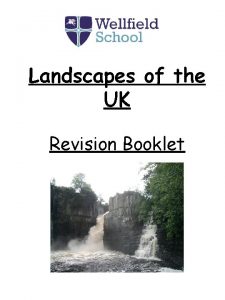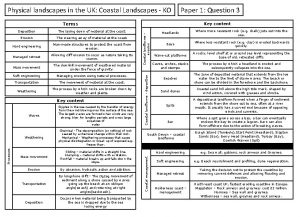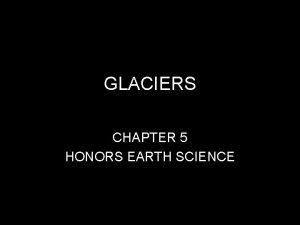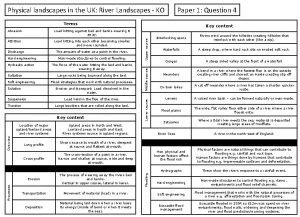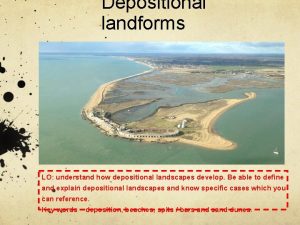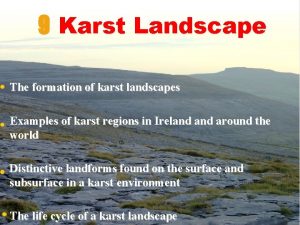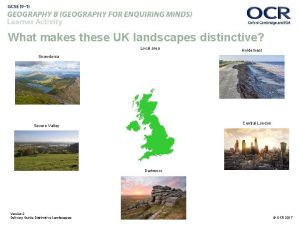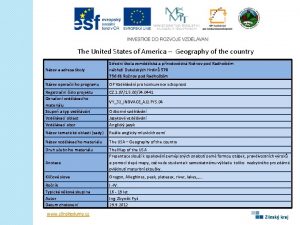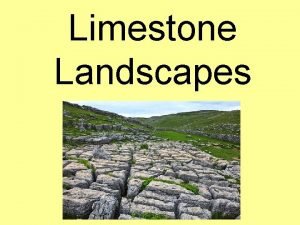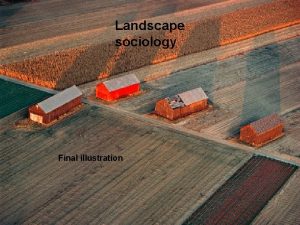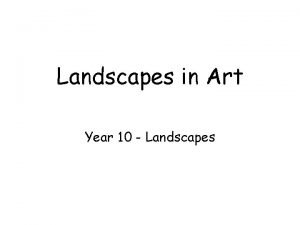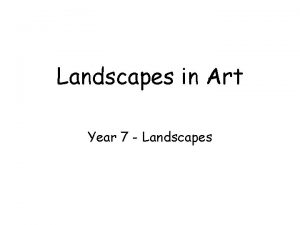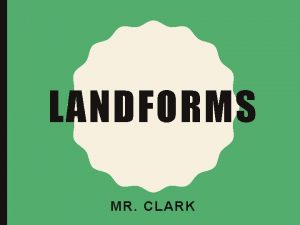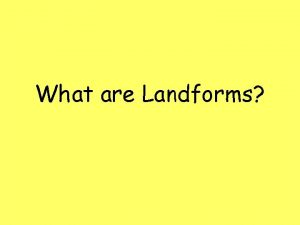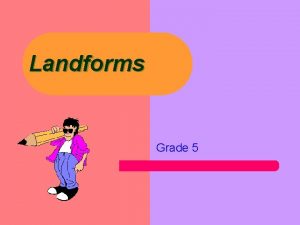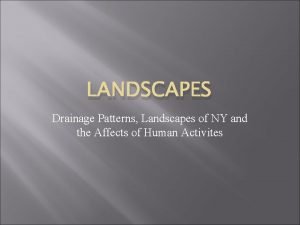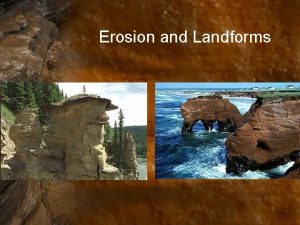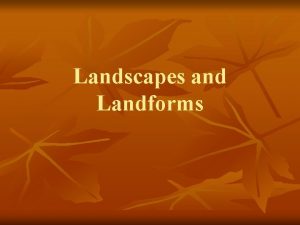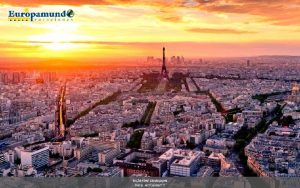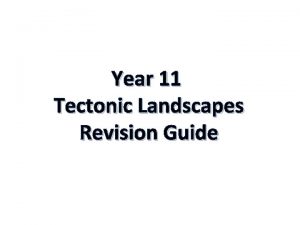Landscapes and Landforms What are landforms landscapes Whats













- Slides: 13

Landscapes and Landforms

What are landforms & landscapes? What’s the difference anyway? Landscapes are the natural, visible features on the surface of the Earth. Landforms are features on the Earth's surface that are part of the terrain. Mountains, hills, plateaus, and plains are the four major types of landforms. Minor landforms include buttes, canyons, valleys, and basins

Landscapes consists of a variety of geographical features that are distinctive to an area. Landscapes are divided into 2 main categories: 1. Natural (mountains and deserts), these are mainly unaffected by human activity and typical to particular areas of the world. 2. Human (cities and farms) have been created and modified by people.

Types of Landscapes include: 1. natural elements of landforms (such as mountains, valleys, coastlines) and water bodies (such as rivers, lakes, seas and oceans) 2. living elements of land cover (including vegetation and wildlife) 3. human elements (including different forms of land use, buildings and structures) 4. changeable elements (such as weather conditions).

Mountain Landscapes Mountains are formed by tectonic plates on the earth’s surface pushing against each other. This movement and pressure causes the shape of the land to change. The land is pushed up in a vertical direction and forms mountains overtime.

Coastal Landscapes This is where land mass meets the sea. These are shaped by natural forces of wind and waves. These geographical forces erode (wear away) or construct (build up) the natural environment. Features of a coastal environment include beaches, dunes and bays.

Riverine Landscapes This landscape is formed by the natural movements of water systems such as rivers. A riverine landscape includes the ecosystem (all living things including plants and animals) in and around the area of a river. Riverine landscapes are excellent for agricultural uses such as farming because the land is rich and fertile for growing food.

Desert Landscape This is a region that receives less than 25 millimetres of rain per year. Deserts cover one third of the earth’s surface and are the most uninhabitable regions on earth. There are 2 types of deserts - cold and hot.

Tropical Rainforests These are lush forests which can be found along the equator. Rainforest landscapes receive lots of rainfall – at least 1500 mm per year. Rainforests are home to a large variety of flora (plants) & fauna (animals)and account for 50 - 70% of all species on earth.

Built Landscapes are created by humans. They provide evidence of human settlement and occupation. Features include infrastructure such as buildings, roads, transport, energy, sewage and telecommunications systems. The construction of built environments usually has damaging consequences for our natural environment.

Glossary Exercise


Questions 1. Describe the site of your school. Is it, for example, on a floodplain, slope, or ridge? 2. Identify the prominent landform features found near your school. What processes were involved in their formation? 3. Describe the landscape of the region in which your school is located? 4. Is there any evidence that people have been affected by, or have had an impact on, the landforms in the area of the school? Outline your evidence.
 Antigentest åre
Antigentest åre Landscapes and landforms booklet
Landscapes and landforms booklet Landscapes and landforms
Landscapes and landforms Moraine
Moraine Uk physical landscapes
Uk physical landscapes Fpm landscapes
Fpm landscapes Depositional landforms
Depositional landforms Karst landscape examples
Karst landscape examples What makes a landscape distinctive
What makes a landscape distinctive Coastal landscapes a level geography
Coastal landscapes a level geography Limestone landscapes
Limestone landscapes Coastal landscapes in the uk
Coastal landscapes in the uk Mediorami
Mediorami Whats hot whats not
Whats hot whats not

